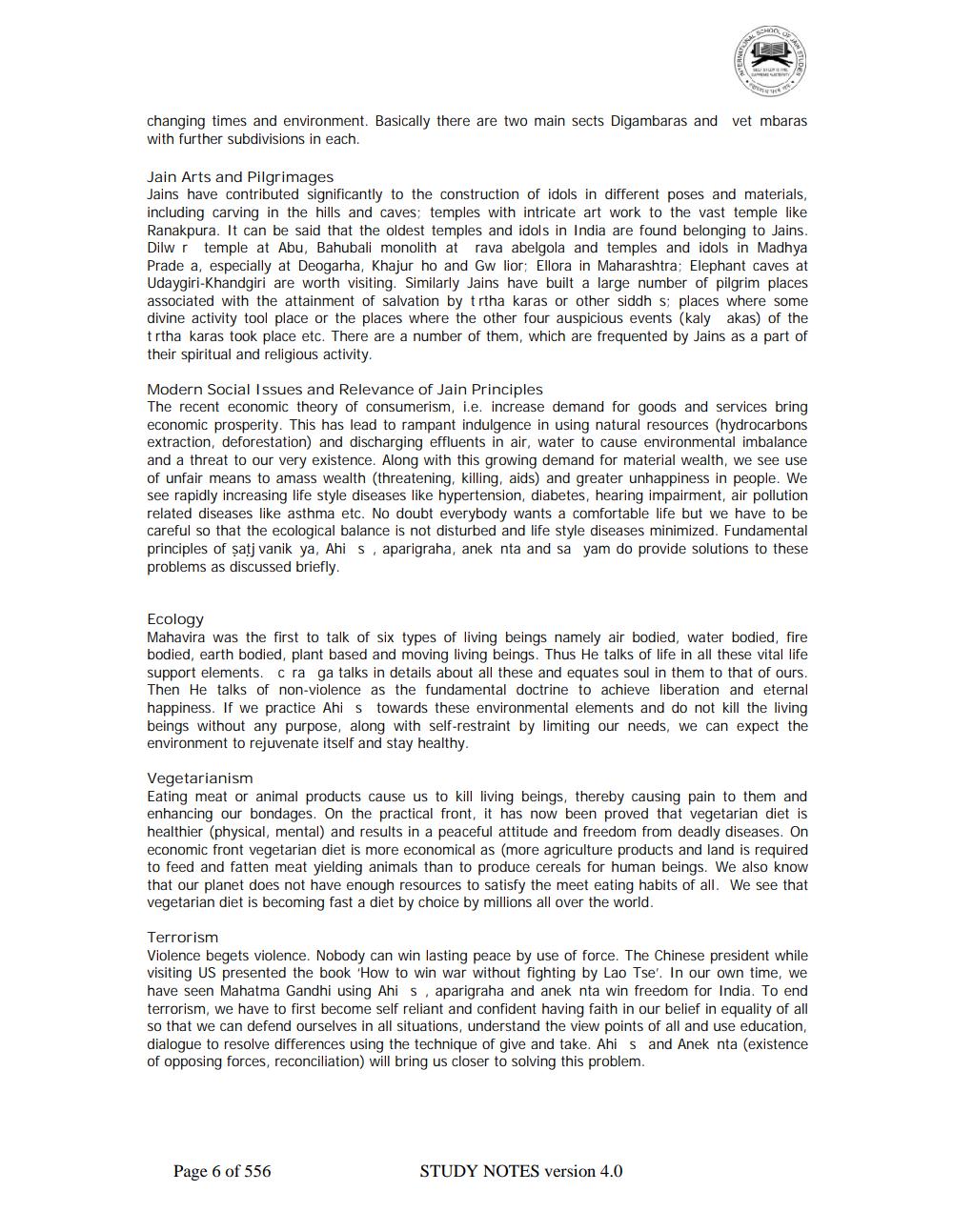________________
changing times and environment. Basically there are two main sects Digambaras and vet mbaras with further subdivisions in each.
Jain Arts and Pilgrimages
Jains have contributed significantly to the construction of idols in different poses and materials, including carving in the hills and caves; temples with intricate art work to the vast temple like Ranakpura. It can be said that the oldest temples and idols in India are found belonging to Jains. Dilwr temple at Abu, Bahubali monolith at rava abelgola and temples and idols in Madhya Prade a, especially at Deogarha, Khajur ho and Gw lior; Ellora in Maharashtra; Elephant caves at Udaygiri-Khandgiri are worth visiting. Similarly Jains have built a large number of pilgrim places associated with the attainment of salvation by trtha karas or other siddh s; places where some divine activity tool place or the places where the other four auspicious events (kaly akas) of the trtha karas took place etc. There are a number of them, which are frequented by Jains as a part of their spiritual and religious activity.
Modern Social Issues and Relevance of Jain Principles
The recent economic theory of consumerism, i.e. increase demand for goods and services bring economic prosperity. This has lead to rampant indulgence in using natural resources (hydrocarbons extraction, deforestation) and discharging effluents in air, water to cause environmental imbalance and a threat to our very existence. Along with this growing demand for material wealth, we see use of unfair means to amass wealth (threatening, killing, aids) and greater unhappiness in people. We see rapidly increasing life style diseases like hypertension, diabetes, hearing impairment, air pollution related diseases like asthma etc. No doubt everybody wants a comfortable life but we have to be careful so that the ecological balance is not disturbed and life style diseases minimized. Fundamental principles of satj vanik ya, Ahi s, aparigraha, anek nta and sa yam do provide solutions to these problems as discussed briefly.
Ecology
Mahavira was the first to talk of six types of living beings namely air bodied, water bodied, fire bodied, earth bodied, plant based and moving living beings. Thus He talks of life in all these vital life support elements. c ra ga talks in details about all these and equates soul in them to that of ours. Then He talks of non-violence as the fundamental doctrine to achieve liberation and eternal happiness. If we practice Ahi s towards these environmental elements and do not kill the living beings without any purpose, along with self-restraint by limiting our needs, we can expect the environment to rejuvenate itself and stay healthy.
Vegetarianism
Eating meat or animal products cause us to kill living beings, thereby causing pain to them and enhancing our bondages. On the practical front, it has now been proved that vegetarian diet is healthier (physical, mental) and results in a peaceful attitude and freedom from deadly diseases. On economic front vegetarian diet is more economical as (more agriculture products and land is required to feed and fatten meat yielding animals than to produce cereals for human beings. We also know that our planet does not have enough resources to satisfy the meet eating habits of all. We see that vegetarian diet is becoming fast a diet by choice by millions all over the world.
Terrorism
Violence begets violence. Nobody can win lasting peace by use of force. The Chinese president while visiting US presented the book 'How to win war without fighting by Lao Tse'. In our own time, we have seen Mahatma Gandhi using Ahi s, aparigraha and anek nta win freedom for India. To end terrorism, we have to first become self reliant and confident having faith in our belief in equality of all so that we can defend ourselves in all situations, understand the view points of all and use education, dialogue to resolve differences using the technique of give and take. Ahi s and Anek nta (existence of opposing forces, reconciliation) will bring us closer to solving this problem.
Page 6 of 556
STUDY NOTES version 4.0




